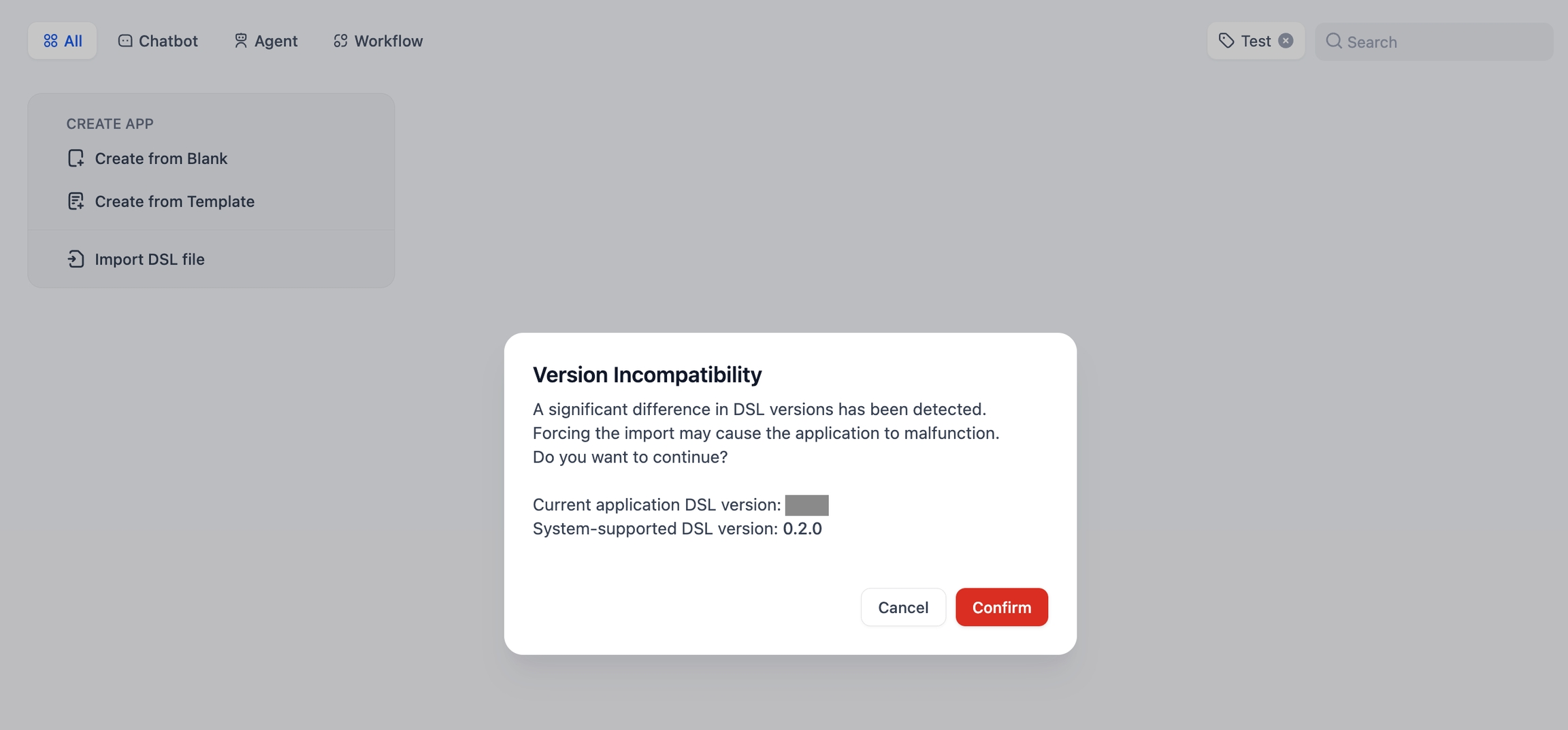App Management
Editing Application Information
After creating an application, if you want to modify the application name or description, you can click "Edit info" in the upper left corner of the application to revise the application's icon, name, or description.

Duplicating Application
All applications support copying. Click "Duplicate" in the upper left corner of the application.
Exporting Application
Applications created in Dify support export in DSL format files, allowing you to import the configuration files into other Dify teams freely. You can export DSL files using either of the following two methods:
Click "Export DSL" in the application menu button on the "Studio" page
After entering the application's orchestration page, click "Export DSL" in the upper left corner

The DSL file does not include authorization information already filled in Tool nodes, such as API keys for third-party services.
If the environment variables contain variables of the Secret type, a prompt will appear during file export asking whether to allow the export of this sensitive information.

Importing Application
To import a Dify application, upload the DSL file to the Dify platform. A version check will be conducted during the import process, and a warning will be issued if a lower version of the DSL file is detected.
For SaaS users, the DSL file exported from the SaaS platform will always be the latest version.
For Community users, it is recommended to consult Upgrade Dify to update the Community Edition and export an updated version of the DSL file, thus avoiding potential compatibility issues.

Deleting Application
If you want to remove an application, you can click "Delete" in the upper left corner of the application.
Last updated